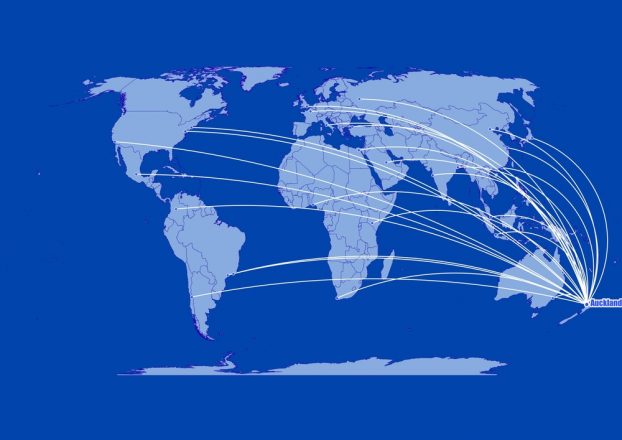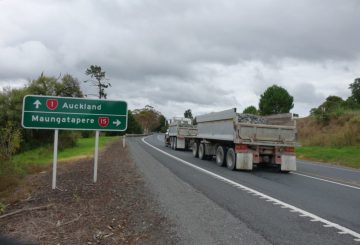Một nhóm ngành công nghiệp hàng không đang kêu gọi chính phủ để thư giãn các hạn chế cách ly quản lý (MIQ) bởi vì nó lo lắng các hãng hàng không quốc tế có thể từ bỏ việc đến đây ở tất cả.
Ban đại diện hàng không của giám đốc điều hành NZ Justin Tighe-Umbers nói với các hãng hàng không Checkpoint ngày càng trở nên thất vọng, và một số đã kéo ra khỏi New Zealand như một điểm đến.
“Điều đang xảy ra tại thời điểm này là các nhà quản lý hãng hàng không ở New Zealand đang phải biện minh cho hiệu suất đường bay và số tiền họ đang thực hiện trên các chuyến bay này, với 60 hành khách trên máy bay [compared] với các phần còn lại của thế giới.
“Ở châu Âu, họ đang lấp đầy máy bay rất nhanh vì họ sẵn sàng đi du lịch cho những du khách được chủng ngừa. Vì vậy, hiệu suất tuyến đường ở New Zealand trông có nguy cơ cao và chi phí cao.”
Bởi bây giờ, các hãng hàng không đã quyết định các tuyến bay của họ trong suốt thời gian mùa hè và đến tháng Ba, ông nói.
“Thực sự chúng tôi đã có cho đến tháng 3 để có thể gửi tín hiệu rõ ràng cho các hãng hàng không để bay vào mùa hè sau đó về những gì các thiết lập của chúng tôi sẽ được thực hiện.
“Vì vậy, bạn thực sự phải có 5 đến 7 tháng [leeway], với cách các mùa hoạt động ở Bắc và Nam bán cầu, để báo hiệu cho các hãng hàng không và lấy năng lực đó.
“Một khởi đầu tuyệt vời và một tín hiệu dễ dàng rằng chúng tôi nghiêm túc về việc mở cửa biên giới sẽ là nói ‘đúng, được chủng ngừa người New Zealand có thể về nhà vào dịp Giáng sinh, họ không cần phải đi vào MIQ’.
“Nhưng để có thể đưa họ về nhà vào dịp Giáng sinh đến New Zealand, chúng ta thực sự cần được nói ngay bây giờ.”
Làm cho MIQ thay đổi có ý nghĩa vì rất nhiều người Kiwis ở nước ngoài ở các nước có nguy cơ thấp hơn Auckland, ông nói.
“Những du khách đã được tiêm phòng hai lần, những người đã có một xét nghiệm âm tính rõ ràng, họ thực sự có nguy cơ thấp hơn nhiều so với cộng đồng họ đang bay vào.
“Vì vậy, nó chỉ là không có ý nghĩa để đưa chúng vào các phòng MIQ quý giá, mà có thể được sử dụng để cô lập những người đã bị bệnh ở đây ở Auckland.”
Chính phủ đã báo hiệu những thay đổi đối với khách đến nước ngoài từ đầu năm tới.
Tuy nhiên, Tighe-Umbers cho biết các hãng hàng không cần một dòng thời gian cụ thể hơn, bởi vì có thể mất đến ba tháng để đưa máy bay phù hợp ra khỏi kho chứa và lên và chạy lại.
“Chúng tôi có một chút công suất dự phòng vào New Zealand tại thời điểm này với các chuyến bay hiện tại sắp tới, bởi vì họ thường chỉ có khoảng 30-60 người trên máy bay đi vào MIQ.
“Để đảm bảo rằng chúng tôi giữ cho các hãng hàng không treo trên và bay ở đây, chúng tôi phải đảm bảo chắc chắn.
“Ngay cả Tây Úc, Tây Úc bảo thủ nổi tiếng, họ đã đưa ra kế hoạch của họ để nói rằng họ sẽ cho phép du khách được tiêm phòng không bị cách ly vào cuối tháng Giêng, một khi họ đạt 90%, vì vậy chúng tôi chỉ cần có sự chắc chắn đó.”
Ngày nay du lịch đến New Zealand là 98% so với hai năm trước, ông nói.
“Trong một tháng điển hình, chúng tôi sẽ có 600.000 người bay đến New Zealand, ngay bây giờ chúng tôi có khoảng 12.000 người bay vào, vì vậy tôi nghĩ chúng tôi đã trở lại thập niên 1960 về số người bay vào New Zealand ngay bây giờ.”
NGUỒN: TIN TỨC RNZ





























































